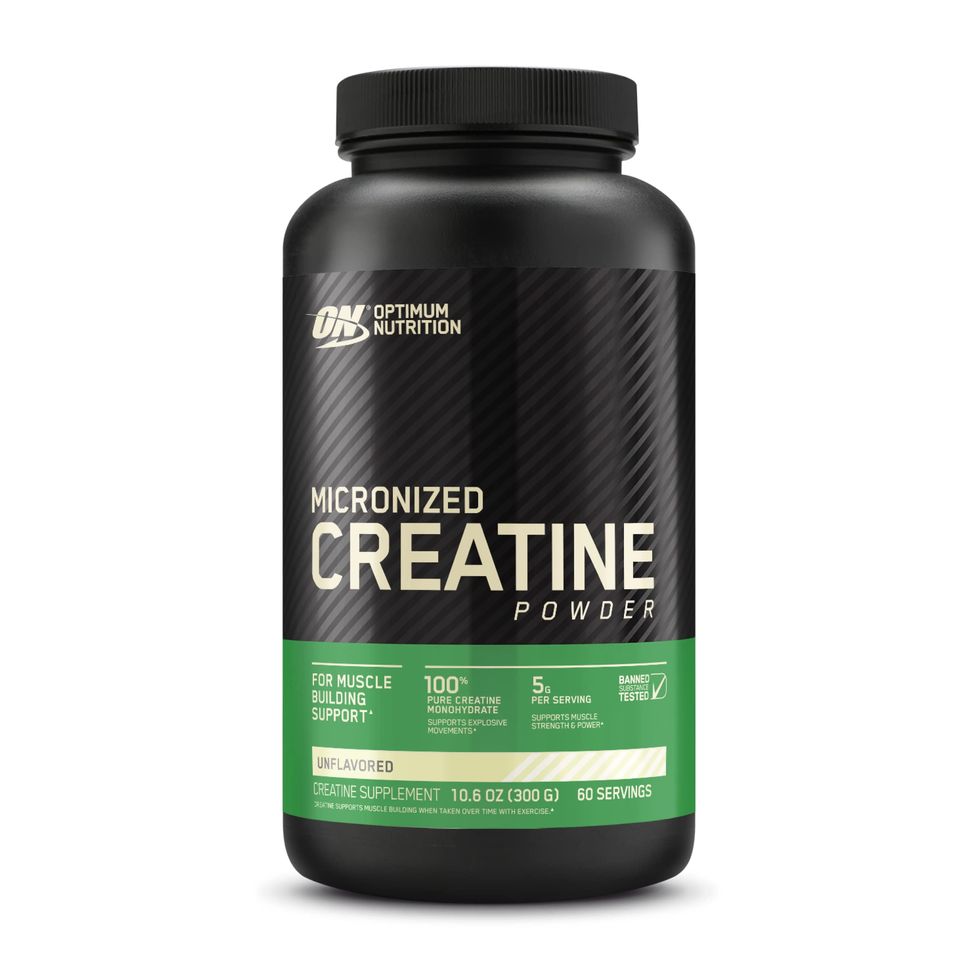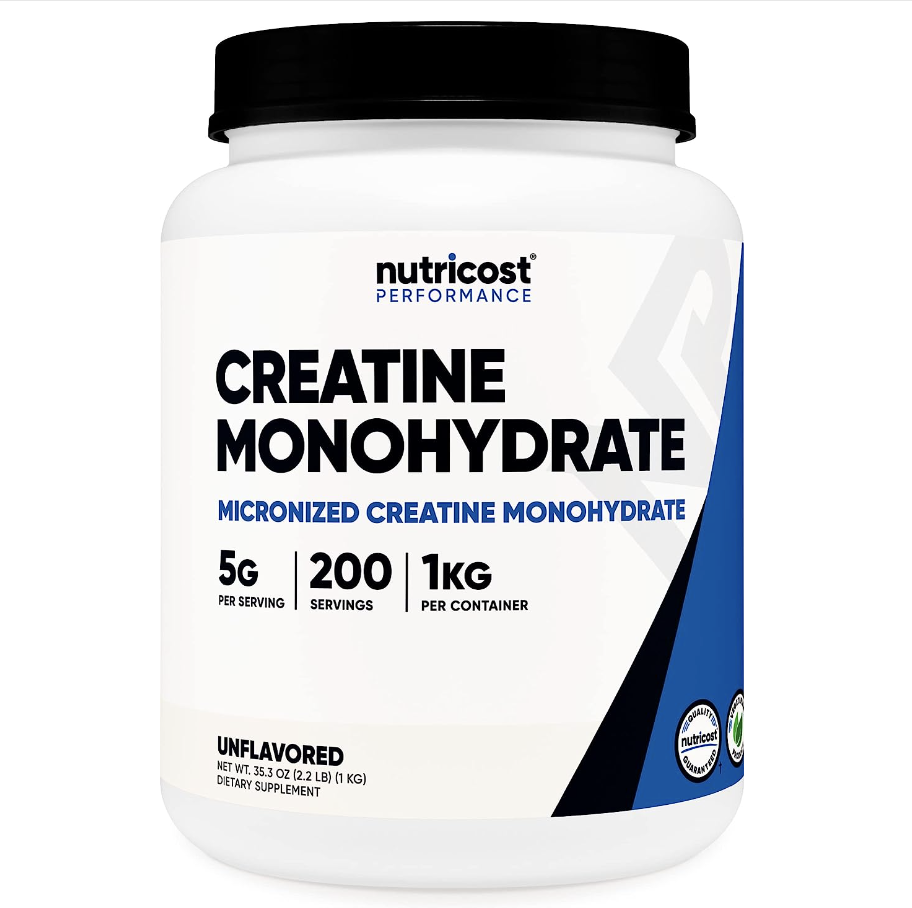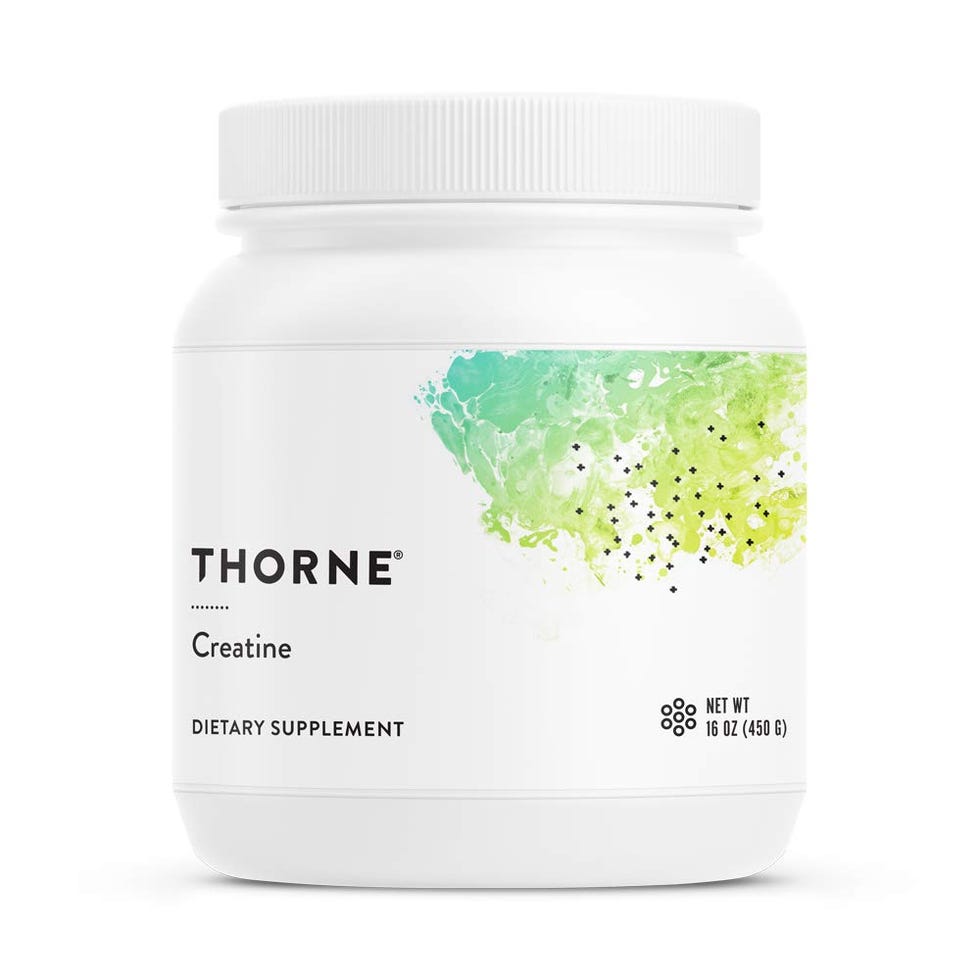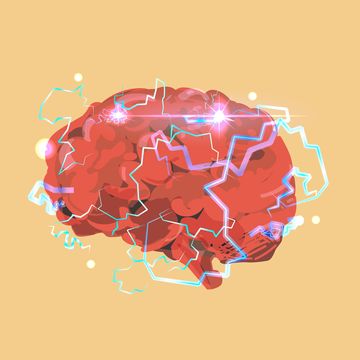When Laura Taft, 62, first started supplementing with creatine at the suggestion of her trainer, it was with her muscles in mind. “I wanted to resist bone density loss as I age,” says the Brooklyn resident. But within a few weeks of taking creatine daily, Taft clocked a benefit that she hadn’t anticipated: a cognitive one. “In addition to strength building, creatine has been really helpful with lifting my brain fog,” she says. The best evidence of that, she adds, may be that she remembers to take it every day. Taft’s experience reflects a broader shift in creatine’s target audience. Once a word rarely heard uttered outside of powerlifting circles, nowadays creatine is attracting new interest among women—and middle-aged women at that. According to doctors, it’s for good reason.
What is creatine, anyway?
Creatine is a natural compound that our bodies make using three amino acids (arginine, glycine, and methionine), says Banafsheh Bayati, MD, a board-certified ob-gyn and medical cofounder of Perelel Health. “Its main job is to help make ATP [the body’s main source of energy] in muscle and brain tissue,” Bayati explains. Creatine is produced in your liver, kidneys, and pancreas, and the majority of it (around 95 percent) is stored in our skeletal muscles, says Stacey Ellery, PhD, a pregnancy physiologist and research group head of biogenetics in reproduction at the Hudson Institute of Medical Research in Australia. But while the body may naturally produce creatine, that amount covers only a portion of what your muscles use, particularly if you’re active or working on building them, says board-certified ob-gyn Mary Claire Haver, MD. And though creatine is also found in animal-based foods like red meat, poultry, and fish, for your body (and brain) to really reap the benefits, you’d need to eat a few pounds a day. Hence: supplements.
How creatine helps muscles
In the ’90s, supplementing with creatine rose to popularity among the body-building masses, as did the first wave of scientific studies supporting its ability to bolster muscle mass. How does it do it? “Creatine phosphate stored in muscles is responsible for supplying energy for quick anaerobic bouts of muscle contraction,” says Heather A. Milton, an exercise physiologist supervisor at NYU Langone Health. We use those CP stores within 10 to 30 seconds, she adds, so the higher the stores we have in the muscles, the more our energy output. “This means creatine provides more capacity to lift a heavier load and withstand fatigue while doing so, and that increased strength of work produces greater muscle growth,” says Milton. So you’re able to train harder, lift heavier, and, crucially, recover faster, because creatine is key both for muscle metabolism and muscle repair. But it’s important to remember that taking creatine alone won’t magically grow your muscles. “It’s the increased capacity to train that most people experience when taking creatine that results in increased muscle mass and exercise performance,” says Ellery.
How the rest of your body may benefit
While the research on creatine and muscle is long-standing and robust, newer research points to additional benefits. One area is the brain, which makes sense, considering that the brain relies on ample amounts of ATP (which, as a reminder, creatine helps create) to function. “When creatine stores are low, brain cells may have a harder time keeping up with the energy demands of thinking, processing, information, and managing stress,” says Haver. Thus far, says Bayati, studies have shown creatine to be beneficial for cognitive function in stressful situations or with sleep deprivation.
Another area of research growth is reproductive health. “Estrogen levels affect creatine metabolism and play a role in both the synthesis and bioavailability of creatine,” says Bayati. This is why creatine levels fluctuate with your menstrual cycle and other hormonal changes, like the drop in estrogen during menopause. Not to mention that key players in the reproductive process (sperm, uterus, placenta, and fetus) rely on creatine as a source of cellular energy. “Observational studies suggest that in some cases, low creatine levels are associated with fertility complications and adverse pregnancy outcomes,” says Ellery.
Why women in midlife may be the biggest winners
Creatine is not a one-size-fits-all recommendation for every woman hovering around midlife. But most doctors agree that, besides vegans and vegetarians (who noticeably lack it in their diets), middle-aged women stand to benefit from it because it can help mitigate the loss of muscle and bone mass, as well as the brain fog that is common in perimenopause. The fact that creatine not only increases exercise performance but also specifically targets changes in energy metabolism, inflammation, and oxidative stress associated with insufficient estrogen is huge for women in midlife, says Ellery. She adds that creatine is also fast becoming a therapeutic intervention of interest for diseases more prevalent in female populations, such autoimmune and major depressive disorders.
For Veerle Arts, a 39-year-old strength and mobility coach and co-founder of Breuckelen Athletic in Brooklyn, New York, a podcast interview with Stacy Sims, PhD, talking about creatine in the context of women’s health and performance benefits first piqued her curiosity. “After taking it for four weeks, I began to notice that I could scale up my workouts and sustain a higher intensity. Around the six-week mark, I felt clearer, like my brain fog had lifted. And two months in, I had noticeably put on more muscle,” says Arts, adding that she has been taking it for 10 months and has no plans to stop. “Most of my female clients over 40 are either considering creatine or already taking it.”
Are these supplements safe?
Creatine’s use as a dietary supplement has been studied for decades, and it is widely regarded as safe. In the ’90s, it got some negative press due to a case study linking it to kidney injury, says Ellery. But that study has since been debunked and superseded by thorough safety reviews. (Still, people with kidney issues should check with their doctors before taking the supplement.)
Because the supplement market is wildly and widely unregulated, paying attention to source and quality are key, says Milton. Creatine monohydrate is the gold standard, says Haver—specifically products that are third-party tested (like those certified by the Clean Label Project) for purity, potency, and contaminants. The clinically effective dose that doctors usually recommend is 3 to 5 grams a day, though people who are keen to saturate their muscles faster, says Haver, will sometimes “creatine load,” which involves taking a higher dose (20 grams per day, split into four doses) for five to seven days. “But that isn’t necessary, especially if you’re in this for long-term health and maintenance.”
Consistency matters more than anything else, and, as with any supplement, it’s important to note that there is a range of responsiveness: Some people experience mild side effects like water retention or gastrointestinal upset, and some people experience a benefit while others don’t. Additionally, many doctors recommend taking it for up to five years, since its effects beyond that time frame are not well documented. The bottom line? For women eager to shore up their mental and physical strength in midlife, it may be worth trying.
Shop the top creatine supplements:
Any content published by Oprah Daily is for informational purposes only and does not constitute medical advice, diagnosis, or treatment. It should not be regarded as a substitute for professional guidance from your healthcare provider.
Fiorella Valdesolo is a Brooklyn-based writer and editor, and the co-founder of Gather Journal.



















